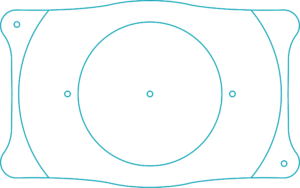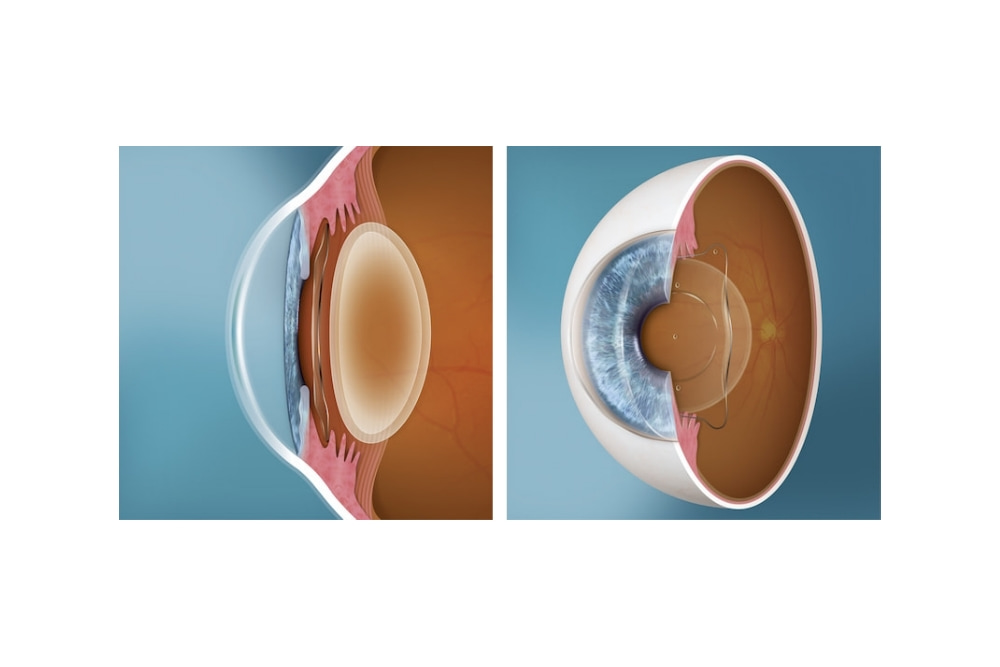Last Updated:
What is EVO ICL?
Composed of Collamer®, a collagen copolymer, the EVO ICL is compatible with the natural chemistry of the body so there are minimal risks of lens rejection. Additionally, the EVO ICL has anti-reflective properties and provides ultraviolet protection.


The Benefits of EVO ICL
- Quality of vision obtained2
- Does not cause dry eye syndrome3
- Excellent night vision4
- Ideal for patients with thin corneas5
- Compatibility of the implant with the body’s immune system
- The broader treatment range for patients with myopia exceeds that of LASIK or PRK
- No additional maintenance
- Safe
- Lens placement is not visible to patient
- Removable and replaceable
- Ultraviolet protection
Candidates for the EVO ICL Procedure
For optimal safety and best results, patients should not have a history of ophthalmic surgery or diseases such as iritis, glaucoma or diabetic retinopathy. After a thorough medical examination of the eyes and an evaluation of the patient’s vision history the doctor will determine whether or not this treatment is appropriate.
Patients must meet the following requirements for the procedure:
- Must be adults between the ages of 21 years to 45 years of age
- The anterior chamber depth must be 3.00 mm or greater
- Had stable vision for at least a year prior to implantation
- Nearsighted

Patients with thin corneas or dry eyes, who are not candidates for LASIK or PRK, may be eligible for EVO ICL vision correction. EVO ICL vision correction may not be suitable for women who are pregnant or nursing or for patients with certain aspects of eye anatomy.6

“I’ve always had vision, but not the best eyesight.
For me, EVO ICL changed everything.”
– Will Levis, NFL Quarterback

The EVO ICL Procedure
On the day of the EVO ICL implantation, the surgeon will numb the eyes with a topical anesthetic before making an opening at the base of the cornea to insert and position the lens. A gel-like solution will be used during the procedure to cushion and protect the eye while the lens is being placed behind the iris of the eye.
In most cases, sutures are not needed because the incision is a smaller size. Eye drops will be administered to prevent infection or inflammation during both the procedure and recovery periods. An eye patch or shield may be used for further protection and comfort after the procedure. Patients should arrange to have someone provide transportation after the procedure. In total, the entire procedure takes 15 to 30 minutes to complete.
Results and Recovery After the EVO ICL Procedure
After the EVO ICL is implanted, patients will likely only need a day or two for recovery, with little to no side effects. Noticeable vision improvement will occur almost right away. The lens remains invisible to others due to its position behind the iris.

The patient will need to return to the surgeon’s office the next day so that the results of the procedure can be evaluated. While the lens is meant to be kept in place for permanent vision correction, it can be removed if necessary. For patients over the age of 40, the EVO ICL can correct your distance vision, but may still require reading glasses for near vision. Your doctor will review your options will you.
Patients will still be able to wear reading glasses for presbyopia after this procedure as well.

Safety of the EVO ICL Implantation
The EVO ICL procedure is not typically associated with the same complications found with either LASIK or PRK. Unlike LASIK or PRK, the EVO ICL procedure is an additive procedure that does not require removal of corneal tissue. Clear distance is achieved without permanently altering the structure of the eye. When complications do occur, they are usually mild and can be corrected by the doctor.
Patients experiencing severe eye pain or a decrease in vision should contact their surgeon immediately.

“Now I can play, exercise or dance, without worrying about my vision.”
– Jimmy O Yang, Comedian
Frequently Asked Questions about EVO ICL
Will I be able to see or feel the implanted lens in my eye?
No. Once the EVO ICL is implanted, it is invisible and cannot be felt in the eye. All you’ll notice is clearer vision.
Can I afford EVO ICL?
EVO ICL is considered an elective procedure, and is not covered by most of our patients’ insurance plans. Pricing varies depending on each patient’s unique needs.
Many of our patients feel that the cost of EVO ICL is well worthwhile when considered against the ongoing expenses of glasses and contact lenses. If you are interested in making this investment in your sight, we will be happy to educate you about the many financing and payment options available here at The Cincinnati Eye Institute.
Is vision correction with the EVO ICL permanent?
EVO ICL is meant to be a permanent solution offering our patients long-term clear vision. Still, a benefit of this option when compared to laser vision correction procedures is that the lens is removable and replaceable. In the very rare event that a patient’s vision needs change after implantation, we can make adjustments to make sure they achieve optimal vision.
Schedule an Appointment
To learn more about EVO ICL and whether you are a candidate, please contact us to schedule an appointment.
1 Sanders D, Vukich JA. Comparison of implantable collamer lens (ICL) and laser-assisted in situ keratomileusis (LASIK) for low myopia. Cornea. 2006 Dec;25(10):1139-46. doi: 10.1097/ICO.0b013e31802cbf3c. PMID: 17172886. Available: https://pubmed.ncbi.nlm.nih.gov/17172886/. Accessed December 3, 2021.
2 Igarashi A, Kamiya K, Shimizu K, Komatsu M. Visual performance after implantable collamer lens implantation and wavefront-guided laser in situ keratomileusis for high myopia. Am J Ophthalmol. 2009 Jul;148(1):164-70.e1. doi: 10.1016/j.ajo.2009.02.001. Epub 2009 Apr 17. PMID: 19375059. Available: https://pubmed.ncbi.nlm.nih.gov/19375059/. Accessed December 3, 2021.
3 Ganesh S, Brar S, Pawar A. Matched population comparison of visual outcomes and patient satisfaction between 3 modalities for the correction of low to moderate myopic astigmatism. Clin Ophthalmol. 2017 Jul 3;11:1253-1263. doi: 10.2147/OPTH.S127101. PMID: 28740361; PMCID: PMC5505606. Available: https://pubmed.ncbi.nlm.nih.gov/28740361/. Accessed December 3, 2021.
4 Martínez-Plaza E, López-Miguel A, López-de la Rosa A, McAlinden C, Fernández I, Maldonado MJ. Effect of the EVO+ Visian Phakic Implantable Collamer Lens on Visual Performance and Quality of Vision and Life. Am J Ophthalmol. 2021 Jun;226:117-125. doi: 10.1016/j.ajo.2021.02.005. Epub 2021 Feb 9. PMID: 33577790. Available: https://pubmed.ncbi.nlm.nih.gov/33577790/. AccessedDecember 3, 2021.
5 Gimbel HV, Ziémba SL. Management of myopic astigmatism with phakic intraocular lens implantation. J Cataract Refract Surg. 2002 May;28(5):883-6. doi: 10.1016/s0886-3350(01)01098-7. PMID: 11978472. Available: https://pubmed.ncbi.nlm.nih.gov/11978472/. Accessed December 3, 2021.
6 Parkhurst GD, Psolka M, Kezirian GM. Phakic intraocular lens implantation in United States military warfighters: a retrospective analysis of early clinical outcomes of the Visian ICL. J Refract Surg. 2011 Jul;27(7):473-81. doi: 10.3928/1081597X-20110106-03. Epub 2011 Jan 17. PMID: 21243974. Available: https://pubmed.ncbi.nlm.nih.gov/21243974/. Accessed December 3, 2021.


